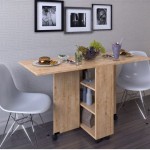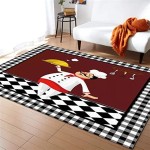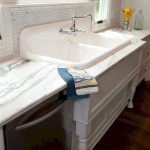How to Make a Kitchen Island Out of Dresser Drawers
Repurposing furniture is a sustainable and cost-effective way to update a home's interior. One popular project involves converting an old dresser into a functional and stylish kitchen island. This project allows for customization, providing a unique piece of furniture tailored to specific kitchen needs and design preferences. Using dresser drawers provides ample storage and a pre-built starting point, simplifying the construction process. This article details the steps involved in creating a kitchen island from dresser drawers, encompassing planning, preparation, construction, and finishing techniques.
Planning and Preparation: Key Considerations
The initial phase of this project involves careful planning and preparation. This stage is crucial for ensuring a successful outcome. Key considerations include dresser selection, space assessment, design planning, and material acquisition.
Dresser Selection: The choice of dresser significantly impacts the final product's aesthetics and functionality. A solid wood dresser is preferable due to its durability and ease of modification. Veneer or particleboard options may be viable, but they require more careful handling and may not be as durable. The dresser's size should be considered in relation to the available kitchen space. Measure the kitchen area precisely to determine the maximum allowable dimensions for the island. Also, consider the layout of the drawers. Are they arranged in a suitable configuration for kitchen storage? Do they slide smoothly and are they in good repair?
Space Assessment: Accurately measuring the kitchen space is vital for determining the optimal size and placement of the island. Consider the flow of traffic within the kitchen and ensure that the island does not obstruct pathways or impede access to other appliances. Aim for at least 36 inches of clearance between the island and surrounding cabinets or appliances. This spacing allows for comfortable movement and prevents overcrowding. The height of the existing countertops should also be taken into account. The island's height should be compatible with the countertops to maintain ergonomic consistency.
Design Planning: The design phase involves visualizing the finished product and determining any necessary modifications. Consider adding a countertop that extends beyond the dresser, creating an overhang for seating. This overhang typically requires the installation of support brackets to ensure stability. Think about incorporating additional storage features, such as open shelving or wine racks. Determine the placement of these features during the design phase to ensure they are integrated seamlessly into the island's structure. It's helpful to sketch out the design or use online design tools to visualize the final product.
Material Acquisition: Once the design is finalized, compile a list of necessary materials and tools. Essential materials include: the chosen dresser, a countertop (butcher block, granite, or quartz are popular choices), wood for framing and support, paint or stain, hardware (knobs, pulls, brackets), and fasteners (screws, nails, wood glue). Essential tools include: a measuring tape, a saw (circular saw or jigsaw), a drill, a screwdriver, a sander, sandpaper, a level, a square, safety glasses, and a dust mask.
Construction: Assembling the Island
The construction phase involves modifying the dresser and assembling the island structure. This stage requires patience, precision, and adherence to safety precautions.
Dresser Modification: Begin by removing the drawers from the dresser. Inspect the dresser's frame for any structural weaknesses or damage. Repair any damaged areas using wood glue and clamps. If necessary, reinforce the dresser's corners with additional wood framing. This reinforcement will provide added stability and support for the countertop. Consider removing the dresser's original feet or base if necessary. These feet may not be suitable for the desired height or style of the island. Replace them with new feet or a custom-built base.
Framing and Reinforcement: Construct a frame around the base of the dresser to provide additional support and raise the island to the desired height. Use 2x4 lumber to build the frame. Ensure that the frame is level and square. Attach the frame to the dresser using screws and wood glue. Reinforcement is particularly important if a countertop overhang is planned. Attach support brackets to the dresser to support the overhang. These brackets should be spaced evenly to distribute the weight of the countertop. Consider adding vertical supports between the frame and the countertop for increased stability.
Countertop Installation: The installation of the countertop is a critical step. Before installing the countertop, ensure that the top surface of the dresser is level and clean. Apply construction adhesive to the top surface of the dresser. Carefully position the countertop onto the dresser, aligning it according to the planned design. Secure the countertop to the dresser using screws from underneath. If the countertop is heavy, consider using clamps to hold it in place while the adhesive dries. Ensure the countertop overhang is properly supported by the brackets.
Adding Storage Features: Consider incorporating additional storage features, such as open shelving or wine racks, during the construction phase. Build the shelves or racks using plywood or solid wood. Attach the shelves or racks to the sides of the dresser using screws and wood glue. Ensure that the shelves or racks are level and securely attached. Consider adding decorative trim to the shelves or racks to enhance their appearance. These features can significantly increase the island's functionality and aesthetic appeal.
Finishing: Enhancing Aesthetics and Durability
The finishing phase involves applying paint or stain, installing hardware, and adding final details to enhance the island's aesthetics and durability.
Sanding and Surface Preparation: Before applying any finish, thoroughly sand all surfaces of the island to create a smooth and even surface. Use progressively finer grits of sandpaper to achieve the desired finish. Sand the dresser, frame, and any additional storage features. Remove all dust and debris after sanding. Apply a primer to the surfaces. Primer helps to seal the wood and provide a better surface for the paint or stain to adhere to. Allow the primer to dry completely before proceeding.
Painting or Staining: Choose a paint or stain that complements the kitchen's existing décor. Apply the paint or stain in thin, even coats, allowing each coat to dry completely before applying the next. Use a high-quality brush or roller for a professional finish. Consider applying multiple coats for increased durability and depth of color. For painted surfaces, consider applying a clear coat of polyurethane to protect the paint and make it easier to clean. For stained surfaces, apply a clear coat of varnish or lacquer to protect the stain and enhance its appearance.
Hardware Installation: Install the chosen hardware, such as knobs, pulls, and handles. These hardware elements can significantly enhance the island's style and functionality. Measure and mark the locations for the hardware. Drill pilot holes before installing the screws. Ensure that the hardware is securely attached. Consider using decorative screws or bolts to add a touch of personalization. The right hardware can complement the island's overall design and enhance its aesthetic appeal.
Final Touches: Add any final touches to complete the project. Consider adding decorative trim, such as crown molding or baseboards, to enhance the island's appearance. Apply caulk to any gaps or seams to create a seamless finish. Clean the island thoroughly to remove any dust or debris. Inspect the island for any imperfections and make any necessary repairs. The goal of the finishing phase is to create a kitchen island that not only functions well but also enhances the overall aesthetic of the kitchen.

Diy Kitchen Island From Dresser
:strip_icc()/103058781-a03e8c2363914f6c94d5d14eb13e5b34.jpg?strip=all)
How To Make A Kitchen Island

How To Make A Kitchen Island From Dresser Janet Clark At Home

Kitchen Island From A Dresser Scavenger Chic

How To Turn A Dresser Into Kitchen Island Diydork Com

Upcycled Dresser And Door Kitchen Island Part 2 Scavenger Chic

Repurposed Cabinet Into Kitchen Island

From Dresser To Island Yellow Brick Home

Dresser To Kitchen Island Upcycled Furniture Diy Dear Creatives

How Do I Make A Kitchen Island Out Of Dresser Hometalk
Related Posts








